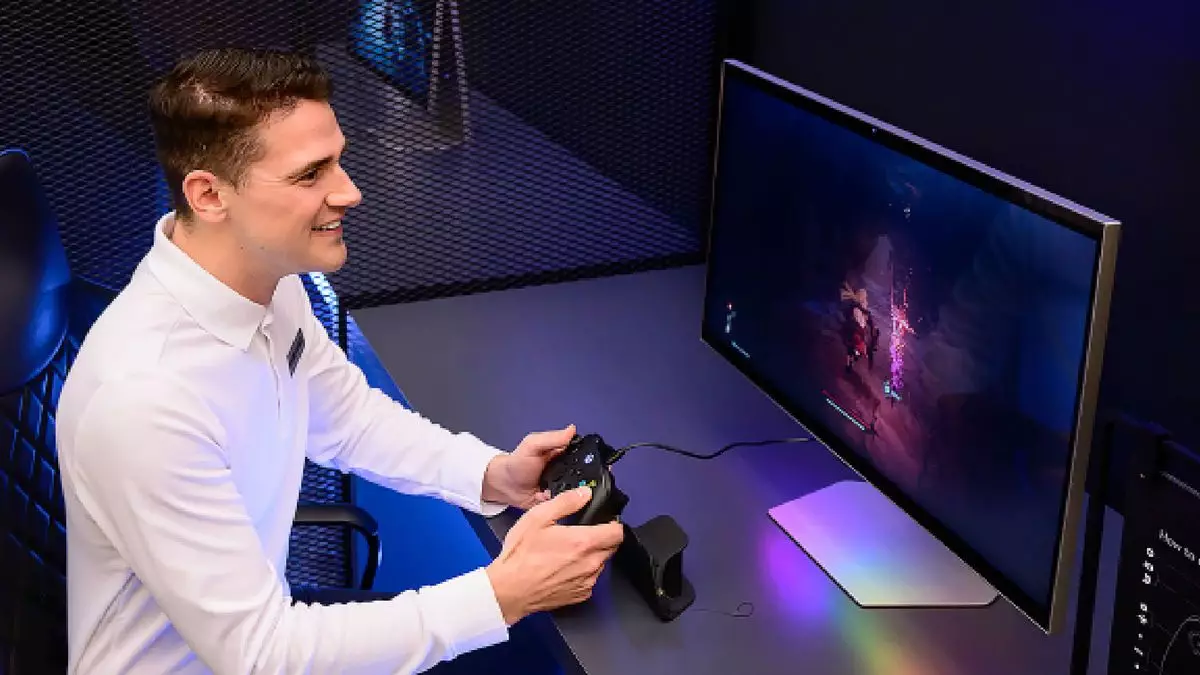The evolution of 3D technology in gaming has long been a subject of fascination. The initial promise of 3D cinema—which captured the imagination of audiences with immersive visuals—has not fully transitioned into the realm of gaming as many hoped. However, a potential breakthrough is on the horizon, thanks to an innovative approach by Samsung and its collaboration with Nexon Korea and Neople. Their joint endeavor, centered around the game *The First Berserker: Khazan*, aims to provide an extraordinary gaming experience that invites players into an entirely glasses-free 3D world.
Samsung’s ambition is to leverage its cutting-edge Odyssey 3D monitor, designed specifically to deliver an “immersive 3D gaming experience without the need for 3D glasses.” This innovation raises questions about how far gaming can be pushed in terms of visual depth and dimensional expression without relying on cumbersome equipment. By its nature, 3D gaming seeks to create experiences that extend beyond mere visual representation, transforming the way users interact with game environments. This latest initiative from Samsung reflects a growing trend in the gaming industry to provide immersive experiences that connect players more intimately with the narratives and visuals on screen.
The technology underpinning the Odyssey 3D monitor includes front-mounted lenticular lenses, stereo cameras, and advanced eye-tracking capabilities. This sophisticated blend is intended to produce a complex light field display, which helps the monitor to project images at varying angles. Consequently, the user can perceive depth without the distortion often found in traditional 3D displays, an achievement that aims to solve issues like crosstalk—where overlapping images can diminish the overall experience.
One of the central challenges of glasses-free 3D technology is its inconsistency among different users. Individual variance in visual acuity means that while one person may be captivated by the depth and clarity of the graphics, another may remain unimpressed or even uncomfortable. This consideration weighs heavily on game developers who strive to ensure a universally appealing experience. As Samsung works with Nexon and Neople to fine-tune the 3D effects for distinct gaming scenarios, there is hope that adjustments can be made to cater to different visual preferences and abilities.
Despite the potential, Samsung’s Odyssey monitor has so far been limited in its ability to transform 2D content into 3D, a feature that is currently confined to full-screen videos. While this limitation may present a temporary setback, it merely underscores the need for a broader and more extensive library of compatible content—a notion Samsung is aware of as it seeks to enhance its offering. Comparatively, companies such as Acer, which has partnered with SpatialLabs to develop its own 3D solutions, illustrate the competitive landscape of the market and the need for constant innovation to maintain relevance.
The skepticism surrounding the viability of glasses-free 3D technology is understandable, especially given the history of failed attempts to integrate 3D into mainstream gaming. Nonetheless, there is an undeniable curiosity surrounding whether Samsung’s initiative can succeed where others have faltered. One prominent factor is the rise of virtual reality headsets, which have steadily gained traction and acceptance among consumers. The ongoing popularity of VR suggests that there is an appetite for immersive experiences—prompting the question, could glasses-free 3D be the next logical evolution?
With the promising early reports regarding the visual enhancements in *The First Berserker: Khazan*, excitement builds around the prospect of Samsung potentially realizing the long-dreamed-of immersive 3D experience in gaming. It’s a thrilling prospect, but with it comes the risk of falling into the trap of fleeting trends—something that has historically plagued the 3D format in other contexts.
As we look toward the future of gaming technology, it is essential to balance excitement with realism. 3D gaming without glasses brings with it a world of possibilities, but translating those possibilities into successful products will take time, effort, and, most importantly, a commitment to overcoming the challenges that have hindered this technology in the past. For now, the anticipation remains high, and as we move forward, the gaming community will be vigilant, watching to see if Samsung’s endeavors can finally make glasses-free 3D a reality.

